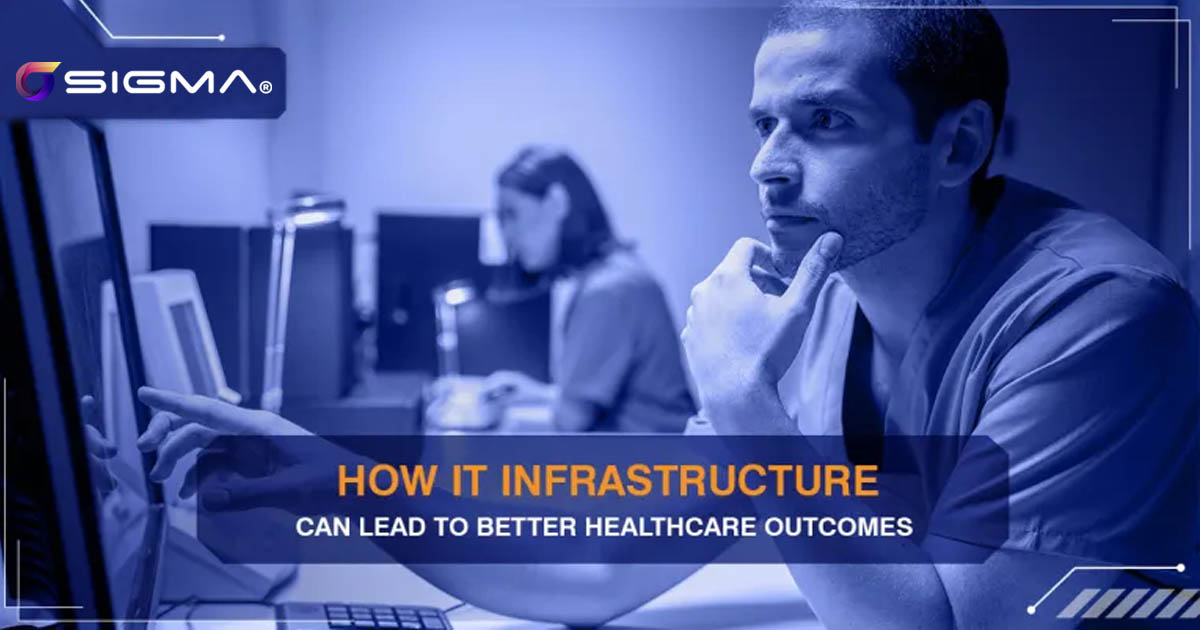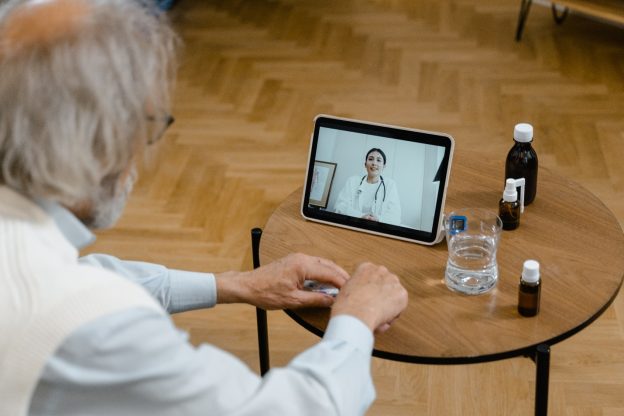
How IT Infrastructure Can Lead to Better Healthcare Outcomes
In a critical sector such as modern healthcare, the right IT can be a stanchion for improved patient care.

Few industries are as fundamental to human life as the healthcare sector. And with digital technologies becoming mainstays of medical procedures and record-keeping, IT infrastructure is more integral to healthcare than ever before.
In this article, we look at how IT can help overcome challenges for healthcare organizations and capitalize upon the opportunities in the sector.
The Opportunities & Challenges in the Healthcare Sector
Healthcare data is extremely sensitive for several reasons.
- It is usually highly private and sensitive, therefore exploitable.
- The user base is immense, requiring a large infrastructure.
- The data exists in many different formats: structured, unstructured, and in various types of media, such as imaging and video.
- The industry is highly regulated through compliance standards with legal and financial implications levied upon the non-compliant.
- The sector often struggles with the cost of IT ownership, as appropriation of funds might be difficult and IT could be seen as a lower priority than investment in direct healthcare provision.
Below are some of the challenges and opportunities faced by the IT sector, followed by suggested IT solutions that could solve those problem.
Healthcare data is now in transit much more than ever, rendering it at greater risk.
Adoption of Electronic Health Records (EHRs)
Many countries are adopting electronic health records, whereby patients have a single medical file that contains their lifetime medical history, diagnoses, treatment details, allergies, immunization status, and investigation results. This becomes even more important if the patient is brought in a life-threatening condition, where access to their full data might be the only way to accurately diagnose their condition and possibly save their life.

Adoption of EHRs varies across and within countries, with nations like the Netherlands, the UK, and Australia having over 95% of their healthcare facilities employing EHRs, while the USA and Canada have 46% and 37% respectively. Saudi Arabia showed an adoption rate of 4% of fully functional EHRs and 13% of a rudimentary system, while Egypt is still in the process of rolling out EHRs in a government pilot program, with maybe around 1-2% of the population (according to local newspapers).
There is a 90% increase in ransomware attacks on healthcare institutions, rendering the sector the highest targeted.
How IT Infrastructure Can Help EHR Adoption
Rolling out an EHR system dictates laying down robust infrastructure and networking capabilities to allow storage, retrieval, editing, and analysis of the massive amount of data, as well as provide remote access and decentralization.
Due to data sensitivity and industry regulations, it also requires strong error prevention, in addition to airtight security and automated backup and recovery to ensure data confidentiality, integrity, and availability.

A combination of appliances such as the Oracle Exadata coupled with Zero Data Loss Recovery Appliance (ZDLRA) could provide the infrastructure needed for such heavy lifting. Exadata’s 50x latency improvement and 73% downtime reduction, as well as ZDLRA’s elimination of data loss, could make 100% EHR adoption a reality. Already provided with security measures, these appliances’ security could be further bolstered by offerings from trusted cybersecurity providers such as Fortinet or TrendMicro.
Remote access might suggest using public clouds to avail of low costs and high availability, which could be problematic.
Telemedicine, Remote Access, Compliance, and Security
Healthcare is generally moving towards remote access for various reasons. One such reason is telemedicine, which is becoming a viable option for provision of healthcare services as it has proved to have many benefits for the practitioner, the patient, and the organization.

Remote access might suggest using public clouds to avail of low costs and high availability, which could be problematic: Public cloud platforms usually comply with industry standards, but other issues might prevent their use, such as data residency and sovereignty restrictions or the need for low latency. Access to the data must also be very tightly controlled as unauthorized access can lead to the divulgence of sensitive data.
Remote access poses a risk in itself, but it is further compounded by the increase in cybersecurity attacks on healthcare. Reports conducted by Kroll in Q2 of 2022 show there is a 90% increase in ransomware attacks on healthcare institutions, rendering the sector the highest targeted.
A highly secure environment, plus a way to recover the data, should ransomware attacks find a way to the data.
With the advent of remote access and telemedicine, healthcare data is now in transit much more than ever, rendering it at greater risk of hijack.
Possible IT Solution to Overcome the Challenge
An infrastructure appliance with flexible deployment options, such as the Oracle Exadata, could be the solution.
It allows public cloud or private cloud deployment (with its Cloud-at-Customer offering), as well as seamless integration in a hybrid model (Public Cloud-at-Customer). The hardware itself provides the lowest latencies in the industry and other features such as reduced database management effort, which facilitate global remote access.

Measures to ensure data safety include software such as Oracle Operation Access Control that prevents unauthorized access to sensitive data, as well as data encryption, where the encryption keys are held by the customer, meaning not even Oracle staff can decrypt the data. The high consolidation of Exadata means that a single security model could be applied to the data, which greatly reduces the chances of misconfiguration and decreases the likelihood of breaches.
Increase efficiency, thereby decreasing workloads and strain on medical and paramedical personnel.
Coupling Exadata with ZDLRA provides a highly secure environment, plus a way to recover the data, should ransomware attacks find a way to the data through human errors.
Analysis, Research, Machine Learning, & Automation
Patient data can be analyzed to provide predictive models into disease onsets, progression, or outcomes. With clinical trial data available for analysis, treatment efficacy can be evaluated and more cost-effective methods of treatment developed. Cost-benefit analysis of interventions could be conducted on very large scales, using technology to come up with the best course of action. Machine learning could provide a means to customize patient care, reduce clinical workloads, and improve operational efficiency.

Automation in healthcare organizations can serve to increase efficiency, thereby decreasing workloads and strain on medical and paramedical personnel, which will reduce errors and increase their satisfaction, improving performance and patient outcomes.
50x latency improvement […] 73% downtime reduction, […] elimination of data loss, could make 100% EHR adoption a reality.
IT Solutions that Enable Powerful Analytics
The ability of an appliance like Oracle Exadata to perform analytics comes in at an impressive terabyte per second per rack, compared to a few gigabytes with other systems, making it an excellent choice to conduct healthcare analytics. With its high consolidation, Exadata lowers the total cost of ownership by 66% for analytics, overcoming the cost barrier.

This powerful database hardware can be coupled with a robust analytics and business intelligence platform like Incorta, which obliterates the need for traditional data warehousing and the previously required ETL/ELT transformations, instead conducting its analytics on the fly in a data lake. Incorta provides a versatile reporting engine so that queries made by medical personnel can be answered in minutes, and presented in formats that are easy to understand. Process automation can be implemented through solutions such as those provided by business process automation provider UIPath.
Obliterates the need for traditional data warehousing and the previously required ETL/ELT transformations.
Healthcare admins are much more knowledgeable about their problems than any provider. A low-code platform such as Kissflow can help administrators create their own applications to automate any processes with minimum intervention from developers for an ultimate quicker turnaround and clearer understanding.
Fraud Detection in Claims and Transactions
Closely interlinked with the healthcare industry is the insurance sector. But errors & fraud within that sector abound making it fraught with perils for the provider and the beneficiary.
With the right hardware, error prevention and rapid identification of fraudulent transactions can be achieved, analyzing data across the entire enterprise in real-time.
Read our in-depth article on how the right IT infrastructure can offset the perils of the insurance sector.
Help administrators create their own applications to automate any processes with minimum intervention.

Conclusion
Infrastructure solutions come in a dizzyingly wide variety. The right choice for each industry and organization requires a knowledgeable IT partner to navigate the terrain of products and solutions in the market.
SIGMA IT is partnered with many OEMs and vendors such as Oracle, Incorta, UIPath, Kissflow, and many others. We have served Fortune 500 clients as well as small & medium businesses, and we have a track record in the healthcare industry.
Contact us for a consultation on how you can leverage your healthcare organization through IT.
